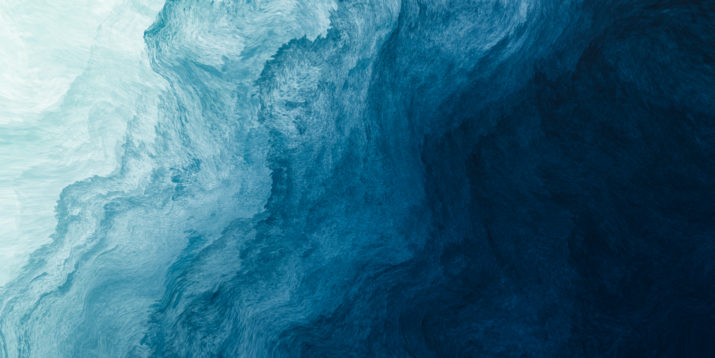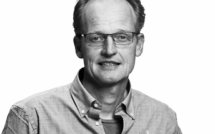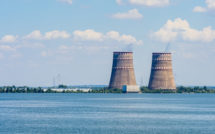

This is part of our special feature, The Frontlines of Environmental Politics in Europe.
In the Anthropocene, more-than-human habitability on this planet is at stake. Societies must develop ways of existing within planetary boundaries. And they must do so very quickly to reduce the suffering and death that environmental change is already causing across the globe. Many eyes are on Europe to address these issues; not only because Europe has historically been and continues to be a major contributor to global climate change, but because Europe has the opportunity to shape potential social-ecological transformations by liberal democratic means, which address matters of postcolonial responsibilities and social-ecological justice.
European societies, and—as part of it—academia and politics, are thus called upon to develop modes of human existence that stay within planetary boundaries, preserve ecological integrity, and acknowledge multi-species relations. In this short contribution, we report on projects that aim to make a small contribution to these major challenges by developing navigational capacities required for a rapid transition to a shared and sustainable future.
Specifically, we focus on fresh water as it is paradigmatic for the Anthropocenic challenge of environmental change and transforming nature-culture relations. As a key resource for human life, natural and agricultural ecosystems, and for many aspects of societal and economic systems, it is increasingly under threat both globally and locally. Within the Berlin-Brandenburg region in north-eastern Germany, we discuss the possibilities of building sustainable water futures through projects which connect participatory research and art-based sustainability science.
Water: too much, too little, too dirty
The Berlin-Brandenburg region is rich in water bodies—Brandenburg boasts 33,000 km of streams and 3,000 lakes, while rivers, channels, and lakes cover 6.6 percent of Berlin’s total area (Goldhammer et al. 2021). However, with an annual mean precipitation of only 580 mm (1981-2010), the region belongs to one of the driest parts of Germany (Senate Berlin, 2021b). Water—as drinking water, water for agriculture, and for the support of ecosystem integrity—is thus a precious resource. Researchers predict the region will face hotter and drier summers, as well as wetter and warmer winters (DWD, 2019; Goldhammer et al. 2021). Already, the yearly average air temperature is rising as the region has seen an increase of 1°C since the 1960’s (DWD 2019).
In Brandenburg, the steady rise in temperature (an increase of 1.3 °C since 1881), is expected to continue to increase along with the number of summer days (defined by a temperature at least 25°C) (DWD, 2019). Higher temperatures increase evaporation from water surfaces, soils, and plants, negatively impacting water quantity and quality, and leading to prolonged drought conditions (DWD, 2019; Senate Berlin, 2021b). Increased winter precipitation has not materialized so far. In tandem with rising temperatures, an increase of extreme weather events, such as a higher frequency of single heavy rainfall events, are expected (DWD, 2019; Goldhammer et al. 2021). Rain is more likely to fall quickly and heavily at rates too fast for soils to absorb (especially those impacted by drought). In the urban areas of Berlin, soil sealing—the covering of the soil surface with materials like concrete and stone by buildings, roads, etc.—further increases surface runoff. This will cause water to rapidly collect, especially in lower areas, increasing the risk of flooding and erosion. Interconnected with the challenges of droughts and flooding is pollution along the region’s water cycle. Many parts of Berlin use a combined sewer system that discharges rainwater along with wastewater in a single sewer system. With increased heavy rainfall hitting the sealed surfaces of the city, the combined sewer system often cannot cope with the overload of water and discharges both rainwater and untreated sewage directly into surface waters such as the river Spree (Goldhammer et al. 2021). The polluted water can be further washed into freshwater ecosystems and groundwater systems, potentially leading to significant public health problems.
These are just some of the water-related issues arising from the regional effects of global climate change. Local and federal policymakers, regulators, and the publicly owned water works in Berlin are responding to these challenges largely through infrastructural measures, such as improving urban water retention or underground storage to contain sewage during extreme weather events (Senate Berlin, 2021a.). While these adaptation measures tackle the aforementioned risks, these approaches are increasingly critiqued as solutions, which enact water as a distinct biophysical resource that is “understood by scientists, controlled by politicians and paid for by the public” (Linton, 2010). They detach water from the manifold cultural and social values and the symbolic meanings that people give to water in their everyday lives. The issue with framing water as a one-dimensional resource is manifold; in extreme cases it can provide validation for the exploitation of water and peoples (Cornejo & Niewöhner, 2021), while in more common cases it can lead to oversights and shortcomings within water management.
Thus, there is increasing awareness that a broader and more dynamic framing of water is needed as part of a sustainable water management that contributes to successful social-ecological transformations (Linton, 2010; Boelens et al, 2016). Specifically, water research and governance must recognize that water is heavily embedded within cultural practices, and that questions of social justice and ethics flow throughout it. These questions must be openly debated in democratic societies, and require collaboration between the social, natural, and engineering sciences, as well as with stakeholders and different publics. Participatory methods are being developed to understand how a rapidly changing nature is related to “society” in all its forms. Such methods draw on interdisciplinary teams and enroll publics within environmental decision-making and knowledge production (Linton, 2010; Strang 2004). Examples from water research include community water management and participatory modelling (see Enquvist et al. 2020; Tsouvalis & Waterton, 2012).
Crucially, such approaches are not about creating public acceptance for policies or improving public understanding of science. Rather, they aim to address what US American philosopher John Dewey tried to formulate almost one hundred years ago in his seminal book The Publics and their Problems (1927). Publics, Dewey argued, form around issues that have not been turned into a manageable problem yet. It is through those public controversies that problems can become framed within democratic societies.
What does this mean for water management? Rather than framing water-related risks in scientific terms and disseminating them to the public, scientific research must engage with different publics and allow shared problem framings to emerge. This enables water to shift from an abstracted scientific matter of fact into a public matter of concern (Latour, 2004). This shift in terminology signals the emergence of new forms of knowledge production which embrace the embeddedness of water in its social and cultural worlds. And as “arbiters of public and democratic reason” (Cornejo & Niewöhner, 2021), science has an important role to play in supporting these co-productive problem framings of water. Encouraging scientific knowledge production to capture and integrate these understandings can (re)open the possibilities of creating water management based in practices of care and protection.
Articulating public matters of concern: art-based sustainability science
So how is the region of Berlin-Brandenburg trying to develop shared and sustainable water futures? Which collaborative opportunities exist for Berlin-Brandenburg publics to form and co-create problem framings, shared imaginaries, and adequate solutions about water? One of many approaches is the Einstein Research Unit Climate and Water under Change (CliWaC)—an inter- and transdisciplinary research project that stretches from climate projections to ethnographies of water practices. Its objective is to involve stakeholders in making the regional climate-water-governance nexus more resilient to the effects of climate change. Embedded within CliWaC as an experimental outreach project, AnthropoScenes engages with CliWaC’s expertise and entwines it with theater through cooperation with its key partner—the Theatre of the Anthropocene—a collaborative network of artists, scientists, designers and civil society that addresses transforming nature-culture relations by means of the stage and urban interventions.
To support the process of public problem co-production, AnthropoScenes creates situations for participation by providing spaces for emerging publics to work together with artists, scientists, public administration, and other stakeholders to articulate priorities and anxieties, desires, and conflicts. These co-productive methods seek to gather how people understand and conceptualize water to formulate matters of concern and care about water in highly contingent and reflexive ways. It aims to create these co-creative spaces for and with people who are not the “usual suspects,” i.e., folks who are positioned in ways significantly different from the average (white, male) academic and administrator and who may not be immediately attracted to formats of participation.
AnthropoScenes draws its inspiration from the emerging field of Art-based Sustainability Science (AbSS), which engages artistic and scientific methods to publicly explore the uncertain challenges and complex solutions related to climate change. Building from art-based research—an umbrella term for different transdisciplinary approaches that fuse artistic practices with scientific process (Leavy, 2018)—AbSS positions itself within the sustainability science field as a new approach to knowledge production (Heras et al, 2021). Its strength lies in invoking experiential and alternative ways of knowing and relating them to established forms of expertise. Applying the power of participation and the inherent value of art to articulate beyond-cognitive understandings and meanings, AbSS catches publics’ expertise, impressions, ideas, and feelings within a sustainability science framework to foster post-positivist knowledge production (Heras et al, 2021).
Sustainable water futures in Berlin-Brandenburg
AnthropoScenes is unfolding as we write. Throughout 2022-23, we are recreating eighteenth century salons with a performative twist; we are staging a play together with the inclusive theater RambaZamba in Berlin; we are going on tour with pop-up street theater to the rural regions of Brandenburg. Each of these formats are closely aligned with artists from the Theatre of the Anthropocene, as well as scientists from CliWaC so that evidence and creativity, rationality, and imagination can work hand in hand.
In closing, we report on one experimental event that led to remarkable first impressions about the power of artistic and participative formats to create spaces for publics and their problems. In the winter of 2022, AnthropoScenes created a transdisciplinary pop-up in a shopping mall in collaboration with several young artists within the temporary learning lab Mall Anders. Along with short films, sculptures and activities, the event featured a so-called “Speakers’ Corner on the Future of Water in Berlin Brandenburg”—a semi-enclosed space where people could leave audio recordings of their thoughts, feelings, stories, associations with water in Berlin-Brandenburg. The concept was inspired by both the original Speakers’ Corner in Hyde Park in London, a popular public space for free speech and political gatherings which has existed since the mid 1800’s (Royal Parks, 2022), as well as the Canadian version, which launched in the 1990’s as a public booth attached to a national television station where anyone with an opinion, talk for a minute and have their message air on TV.
Shopping mall passers-by were drawn in through a mixture of interest, aesthetics, and coincidence. Upon finding this was no pedagogic space with scientists to explain regional water problems, people began to engage with the variety of artistic and participatory materials. What emerged was a collection of stories and vignettes about cultural connections and social meanings ascribed to water. For instance, inspired by the sculpture built out of recycled plastic, several young children talked about the problem of littering and water pollution in their neighborhoods. Or when taking part in the collaborative water mapping activity, two elderly men told tales of growing up in Israel and Iran, facing water shortages and respectively comparing this to their present day lives in Berlin. Two other men in their twenties entered the mall space to initially “get free stuff” and were cautious of getting involved, noting they felt as though they had “no content.” However, after watching the artist’s short films, they were encouraged to leave their audio stories which meandered through their everyday use of water—from using the toilet to cooking breakfast—to the impact of corporations like Tesla or their own private vehicles on regional water bodies.
These snapshots highlight the openness and provocative nature of art to inspire more than cognitive connections and understandings, and hints at the power dynamics, moral orders, and social imaginaries, which can be challenged in this process. In addition, it showcases the strength of these art-based methods to open conversations with publics who may not have the chance to voice their concerns otherwise (Trott et al, 2020).
Operating as an art-based sustainability science project, AnthropoScenes is embarking on a process of empowerment where stories, experiences and knowledges are made meaningful to people and by people. Spaces are created for publics to reconnect, reinvest, and reframe water with its social and cultural worlds. Critically, AnthropoScenes applies its iterative and reflexive processes at these gatherings to integrate multi-modal forms of output into CliWaC’s scientific and political processes (such as participatory modelling and reflexive policy design). This prepares a common ground for individual actors and institutional stakeholders to come together to start to build shared pathways towards sustainable water futures.
However, it is important to note that this process does not take shape apart from or against scientific knowledge, nor does it run counter to principles of good scientific practice. AnthropoScenes is not interested in creating spaces of an ignorant “anything goes” or post-truth political manipulation. Instead, it aims to encourage symmetrical spaces of dialogue between scientific and local knowledge systems where one-dimensional framings of natural resources can be open. Dialogues with other legitimate ways of being in, experiencing and knowing the world can encourage science to explicate its assumptions, its own embeddedness in particular value systems, and its inherently political and ethical nature. Through these multilateral discussions, AnthropoScenes is interested in supporting the co-creation of social-ecological transformations by building sustainable water futures together.
In an epoch of post-truth politics and polarized discourses, steering liberal democratic societies through complex social-ecological transformations is a daunting task. These projects provide a brief glimpse of what forms everyday engagement of science, arts and public discourse can take in Europe. Of course, these are humble beginnings. Yet, over time, these sorts of boundary crossing projects which embed socio-cultural and experiential knowledges into scientific and political processes can create a shared ownership of the knowledge base from which to drive socio-ecological transformations. And while Europe’s past is tainted by its colonial and extractive legacies, it should seize the chance to garner these bottom-up approaches and set a precedent for social-ecological justice based not in abstracted scientific assumptions, but in the public politics of concern and care.
AnthropoScenes is funded within the framework of the Excellence Strategy of the German federal and state government by the Berlin University Alliance. It is a cooperation of the Integrative Research Institute on Transformations of Human-Environment Systems (IRI THESys) at the Humboldt-Universität zu Berlin (HU), the Technische Universität Berlin (TU), Freie Universität Berlin (FU) and the Theater of the Anthropocene.
Based at Humboldt-Universität zu Berlin’s IRI THESys, Pauline Münch coordinates the project AnthropoScenes which works at the intersection of science and theater to connect different audiences to the future of water in Berlin-Brandenburg. She holds a BA in Psychology from the University of British Columbia and an MSc. in Food Security from the University of Edinburgh and has worked with different inter- and transdisciplinary projects, as well as research institutes and community groups to develop visual, written and audio forms of science communication.
Jörg Niewöhner directs the Integrative Research Institute Transformations of Human-Environment Systems at Humboldt-Universität zu Berlin. He is an environmental scientist and anthropologist. In his teaching and research, he focuses on ethnographic means of understanding human-environment relations and how they shift rapidly in response to planetary environmental change and different ways of knowing and experiencing it.
References
Boelens, Rutgerd, Jaime Hoogesteger, Erik Swyngedouw, Jeroen Vos and Philippus Wester. 2016. “Hydrosocial territories: a political ecology perspective.” Water International 41, no.1: 1-14.https://doi.org/10.1080/02508060.2016.1134898
Cornejo P., Sascha and Jörg Niewöhner. 2021. “How Central Water Management Impacts Local Livelihoods: An Ethnographic Case Study of Mining Water Extraction in Tarapacá, Chile.” Water 13: 3542. https://doi.org/10.3390/w13243542
Deutscher Wetterdienst (DWD). 2019. Klimareport Brandenburg 40.https://www.dwd.de/DE/leistungen/klimareport_bb/klimareport_bb_2019_download.pdf;jsessionid=F72910E5D1C8D6D896784A34804ABF43.live11042?__blob=publicationFile&v=5
Dewey, John.1927. The public and its problems. New York. Holt.
Enqvist, Johan, Gina Ziervogel, Luke Metelerkamp, John van Breda, Ntombikayise Dondi, Thabo Lusithi, Apiwe Mdunyelwa, Zinzi Mgwigwi, Mpumelelo Mhlalisi, Siya Myeza, Gciniwe Nomela, Ann October, Welekazi Rangana & Maggie Yalabi. 2022. “Informality and water justice: community perspectives on water issues in Cape Town’s low-income neighbourhoods.” International Journal of Water Resources Development 38, no. 1: 108-129, https://doi.org/10.1080/07900627.2020.1841605
Goldhammer, Tobias, Anja Höhne, Lukas Kleine, Anna Lena Kronsbein, Jörg Lewandowski, Thomas Mehner, Birgit Maria Müller, Martin Pusch, Christoph Josef Reith, Hanna Schulz, Stephanie Spahr. 2021. “Die Region Berlin-Brandenburg und die Tesla-Gigafactory.” https://www.igb-berlin.de/news/die-region-berlin-brandenburg-und-die-tesla-gigafactory
Heras, María, Diego Galafassi, Elisa Oteros-Rozas, Federica Ravera, Luis Berraquero-Díaz & Isabel Ruiz-Mallén. 2021. “Realising potentials for arts-based sustainability science.” Sustainability Science 16: 1875–1889. https://doi.org/10.1007/s11625-021-01002-0
Latour, Bruno. 2004. “Why Has Critique Run out of Steam? From Matters of Fact to Matters of Concern.” Critical Inquiry 30 (2): 225-248.
Leavy, Patricia. 2018. “Introduction to arts-based research.” Handbook of arts-based research, 3-21. New York: Guilford Press.
Royal Parks.2022. “Speakers’ Corner, Hyde Park.” Available at: https://www.royalparks.org.uk/parks/hyde-park/things-to-see-and-do/speakers-corner
Senate Berlin: Department for the Environment, Urban Mobility, Consumer Protection and Climate Action. 2021a. “Masterplan Wasser Berlin: Zwischenbericht zum Stand der Erarbeitung.” Available at https://www.berlin.de/sen/uvk/umwelt/wasser-und-geologie/masterplan-wasser/
Senate Berlin: Department for the Environment, Urban Mobility, Consumer Protection and Climate Action. 2021. “Environmental Atlas Berlin: Long-term Mean Precipitation Distribution 1981-2010.” Available at:https://www.berlin.de/umweltatlas/en/climate/precipitation-distribution/1981-2010/map-description/
Trott, Carlie D., Even, Trevor .L. & and Susan M. Frame. 2020. “Merging the arts and sciences for collaborative sustainability action: a methodological framework”. Sustainability Science 15: 1067–1085. https://doi.org/10.1007/s11625-020-00798-7
Tsouvalis, Judith and Claire Waterton. 2012. “Building ‘participation’ upon critique: The Loweswater care project, Cumbria, UK.” Environmental Modelling & Software 36: 111-121.
Figure 1. Experimental pop up in shopping mall (Münch, 2022)
Published on May 18, 2022.




